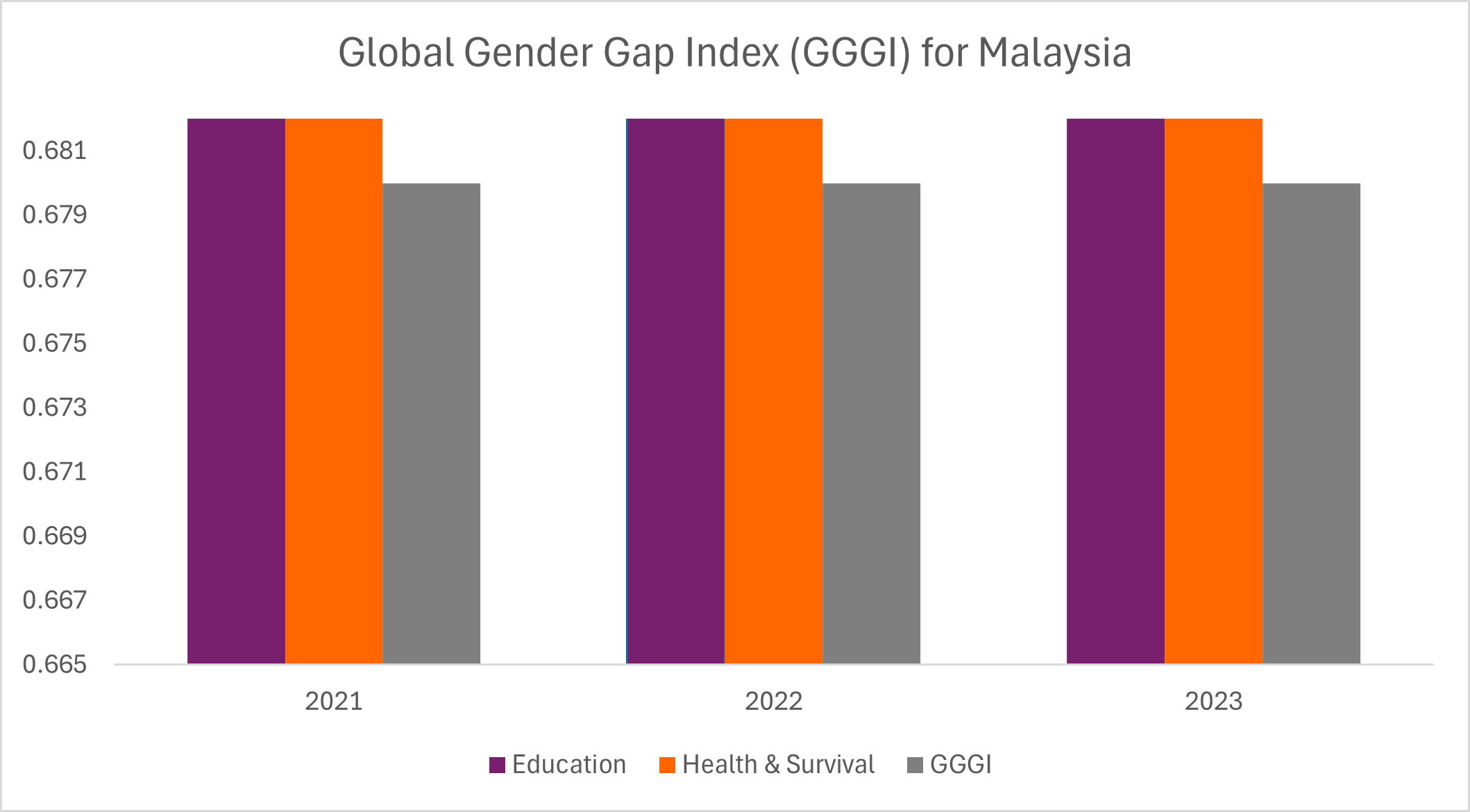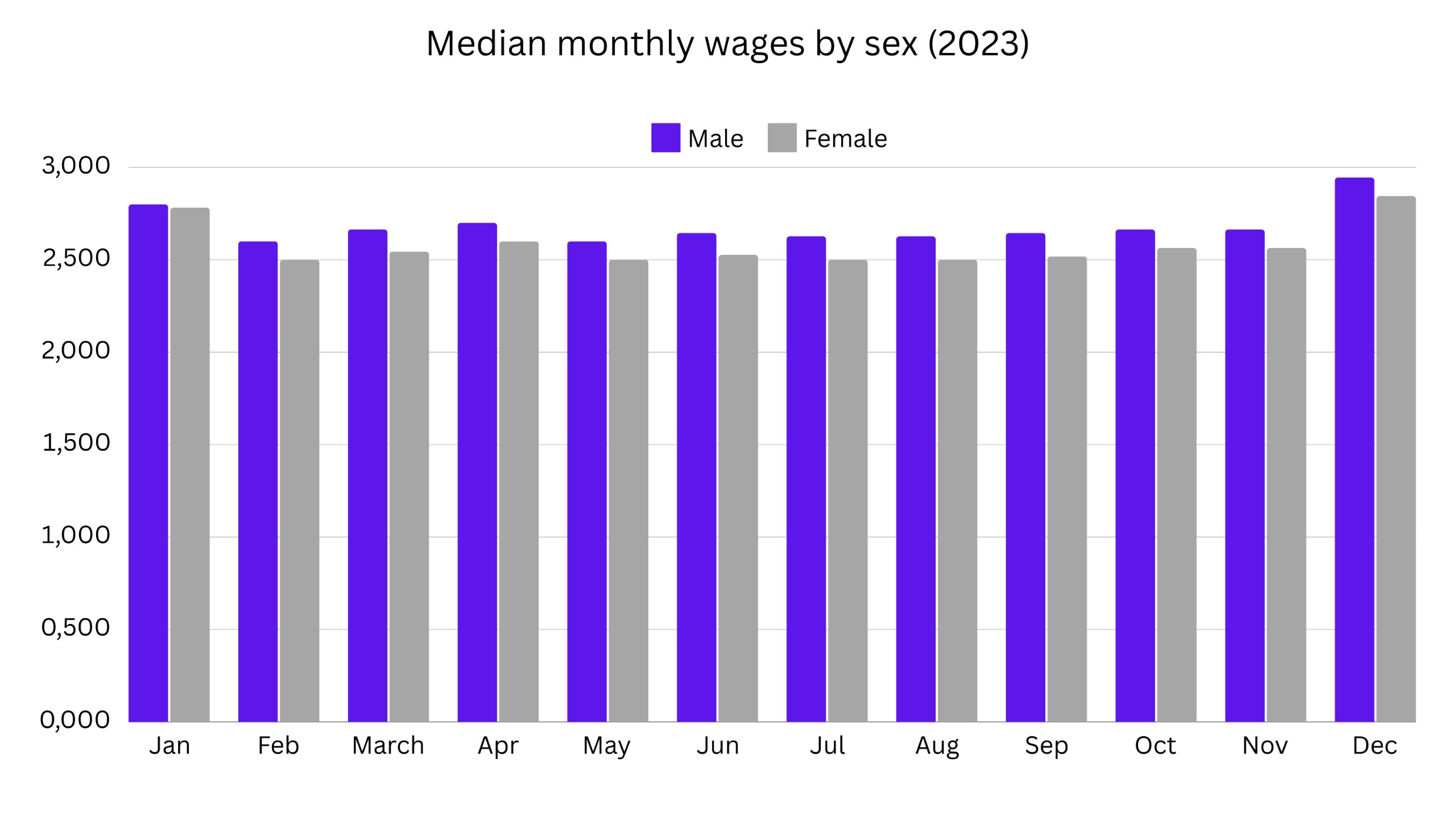Gender Policy
A. POLICY OF NON-DISCRIMINATION AGAINST WOMEN (INCLUDING NON-DISCRIMINATION POLICIES FOR TRANSGENDER)
Universiti Sains Malaysia (USM) adheres to the principles set forth in its Constitution, particularly the provision under Article 8, titled "Distinction of race and creed prohibited." This article explicitly states that membership in the university—whether as an employee, officer, or student—shall be open to all persons irrespective of gender, race, religion, nationality, or class, subject to Article 153 of the Federal Constitution.
Distinction of race and creed prohibited
8. Subject to Article 153 of the Federal Constitution, membership of the University, whether as an employee, officer or student, shall be open to all persons irrespective of gender, race, religion, nationality or class; and no test of religious belief or profession shall be adopted or imposed in order to entitle any persons to be admitted to such membership or to be awarded any degree or diploma of the University, nor shall any fellowship, scholarships, exhibition, bursary, medal, prize or other distinction or award be limited to persons of any particular gender, race, religion, nationality or class if the cost of the same is met from the general funds of the University.
B. POLICY FOR WOMEN APPLICATIONS AND ENTRY
Universiti Sains Malaysia (USM) evaluates all applications based on specific admission criteria set by the Senate, ensuring fairness and equality for all applicants. USM does not discriminate against women or any gender in its admission process. Selections are made based on three key principles: merit, potential, and diversity. In fact, the number of female students at USM has consistently exceeded that of male students, reflecting the inclusiveness of our approach.
The key pillars of USM's student intake policy are as follows*:
- MERIT USM follows a merit-based system that evaluates applicants primarily on their academic achievements (90%) and co-curricular involvement (10%). Academic strength, based on STPM/Matriculation/Diploma/Equivalent grades, forms the majority of the assessment, while contributions in sports, clubs, associations, uniform bodies, and National Service Training Program account for the remainder. This transparent and competitive ranking system ensures that all candidates, regardless of gender, are assessed fairly.
- POTENTIAL Beyond academic performance, USM assess candidates on their overall potential, including talents, interests, mental resilience, character, and personal values. Candidates with strong potential are seen as likely to thrive in their chosen programs, contributing to the university and society at large.
- DIVERSITY USM values diversity in academic background, ethnicity, culture, gender, occupation, and residence. Ensuring a diverse student body fosters unity and healthy competition, and strengthens the university's commitment to inclusivity and integrity.
*The original Bahasa Malaysia version of the USM's student intake policy can be accessed at: https://pohon.usm.my/pengambilan.php
C.EMPLOYMENT POLICY PAY SCALE EQUITY
USM follows the salary scale set by the Malaysian government, ensuring equal pay for male and female staff (https://spa.gov.my/spa/laman-utama/gaji-syarat-lantikan-deskripsi-tugas/ijazah-sarjana-phd?start=1). As a statutory body, USM adheres to the salary scheme established by the Federal Government of Malaysia. In 2023, the lowest salary grade for USM staff (grade 11) is RM1,956, including allowances, which is higher than the national minimum wage of RM1,500. The salary is based on qualifications, not gender.In terms on pay scale for gender equity, we follow the gender equity gap.

The data on Malaysia's Global Gender Gap Index (GGGI) for the years 2021 to 2023 shows a steady trend of progress in closing the gender gap. In 2021, Malaysia's score was 0.676, which then improved slightly to 0.681 in 2022. The upward trajectory continued in 2023 with a score of 0.682.
This consistent increase in scores reflects Malaysia's efforts toward enhancing gender equality, with incremental progress made each year. Despite these improvements, the scores indicate that approximately 31.8% of the gender gap still needs to be addressed as of 2023. This underscores the need for continued policies and initiatives to close the gap further.
The data for Malaysia's Global Gender Gap Index from 2021 to 2023 reflects significant progress in both education and health and survival. In education, Malaysia has consistently made strides towards achieving gender parity. In 2021, the score stood at 0.994, indicating that nearly all gender disparities in education had been addressed. This upward trend continued into 2022, with a slight improvement to 0.995, showing further progress. By 2023, Malaysia had achieved a perfect score of 1.000, signifying that full gender parity in educational attainment had been reached. This impressive milestone indicates that both men and women now have equal access and opportunities in education.Meanwhile, in the area of health and survival, Malaysia has also demonstrated strong performance, although with minor fluctuations. The score in 2021 was 0.972, reflecting that Malaysia was close to achieving gender equality in health outcomes. This score remained stable in 2022, signaling consistent efforts in maintaining gender parity. However, in 2023, there was a slight decline to 0.969, suggesting some small changes in health outcomes between genders. Despite this, the overall score remains high, indicating that Malaysia has largely sustained gender parity in health and survival over the years.
 Source : (DOSM,2024)
Source : (DOSM,2024)
Source: (DOSM,2024)
At the beginning of 2023, both genders show similar wages in January, but from February onward, the wages of males tend to be higher, with the gap being more noticeable in certain months such as March, July, and November. Despite this gap, female wages tend to catch up in several months, notably in April, May, and October, where the difference is minimal.In terms of overall trends, the median wage for both genders seems stable across the year, with minor fluctuations. The highest wages for both males and females are observed in December, where males' earnings are slightly higher than females'. This graph highlights a persistent, though not large, wage gap between genders throughout 2023.
D.GENDER EQUALITY POLICY (GEP)
Universiti Sains Malaysia (USM) is currently in the process of drafting its Gender Equality Policy (GEP). This policy aims to create a more inclusive, fair, and respectful environment for all groups within USM, including academic and administrative staff, as well as students, while ensuring a safe and supportive campus atmosphere. The need for this policy arises from the awareness of addressing gender inequalities and ensuring equal opportunities for all university members, regardless of gender. Additionally, the policy is crucial for strengthening USM’s commitment to human rights principles and aligning with international standards on gender equality, in line with global efforts to achieve the Sustainable Development Goals (SDGs), particularly SDG 5: Gender Equality. KANITA has been entrusted with preparing this policy, which is currently at the draft review stage. Several activities have been conducted to gather feedback from the USM community on the necessity of this policy, including town hall sessions across all main campuses, in-depth interviews, focus group discussions and surveys with USM members. The policy is expected to be launched by the end of 2025.